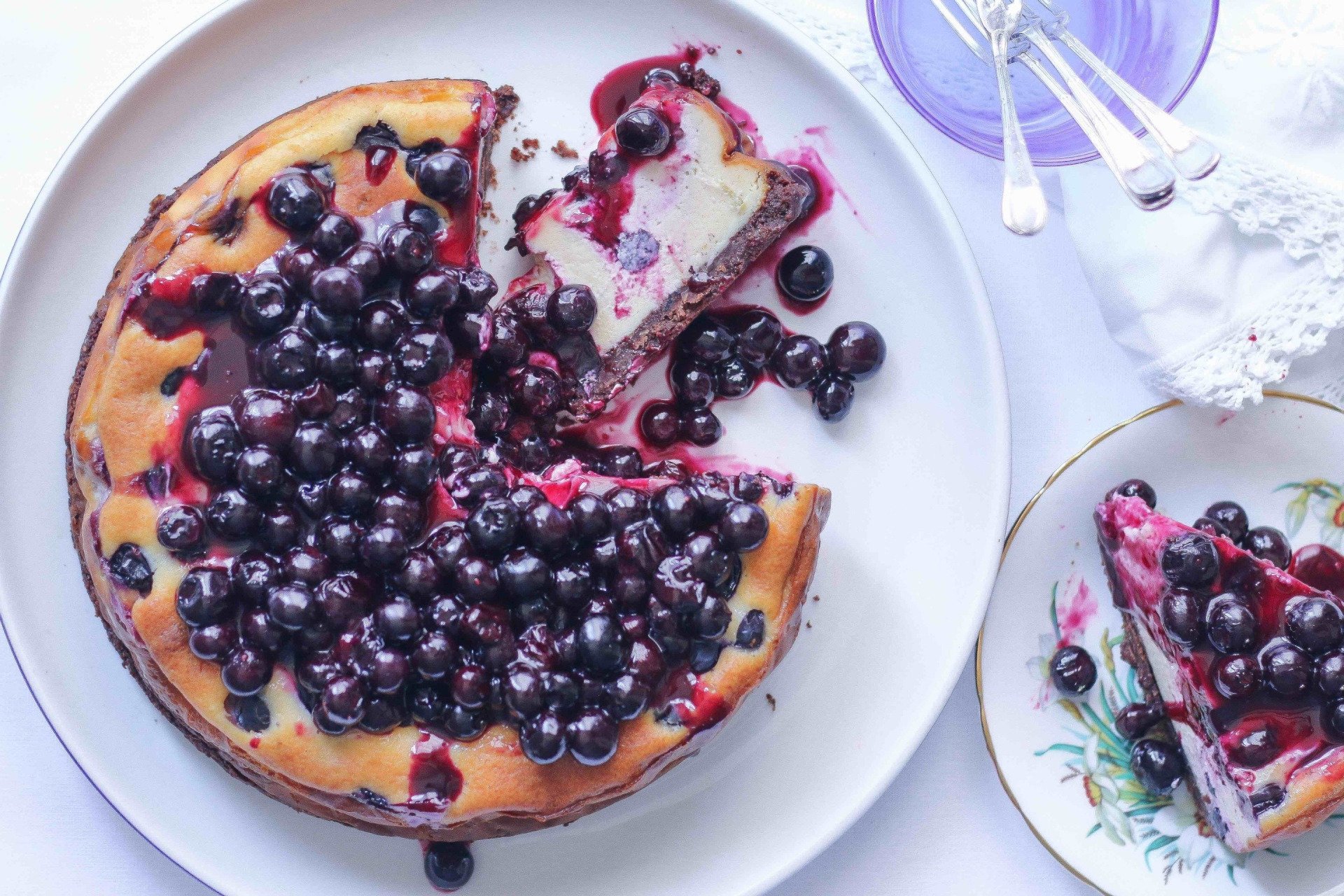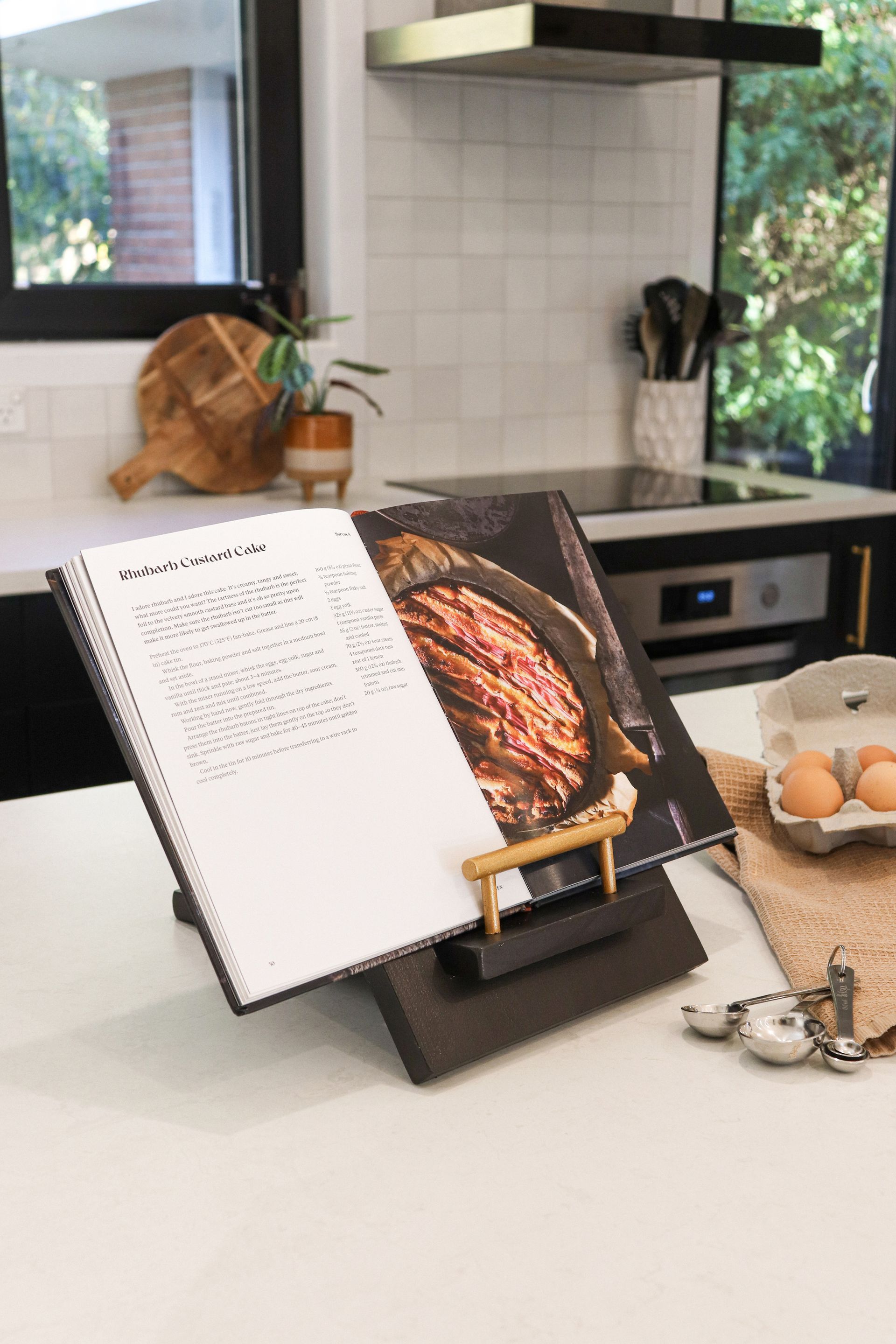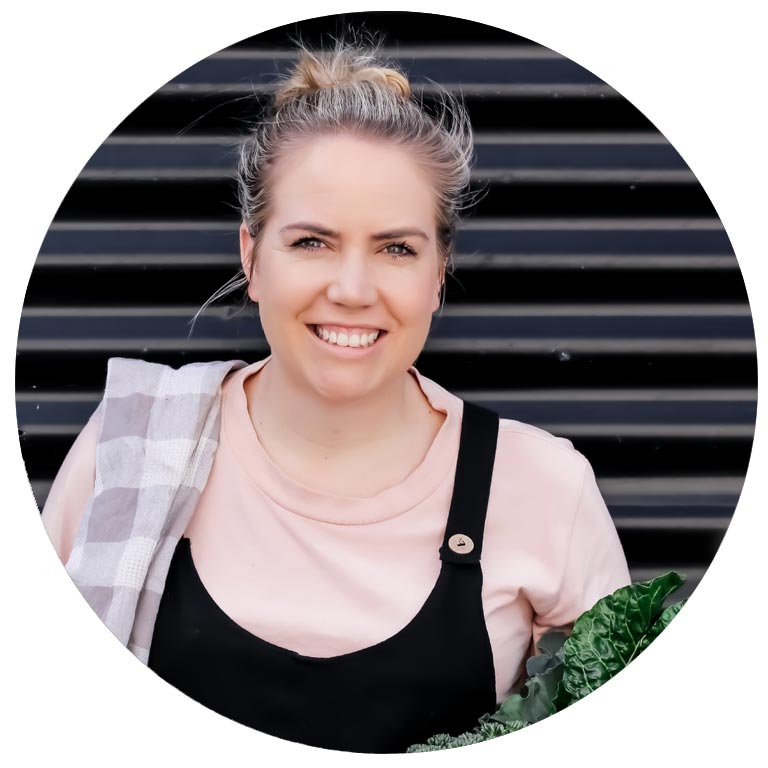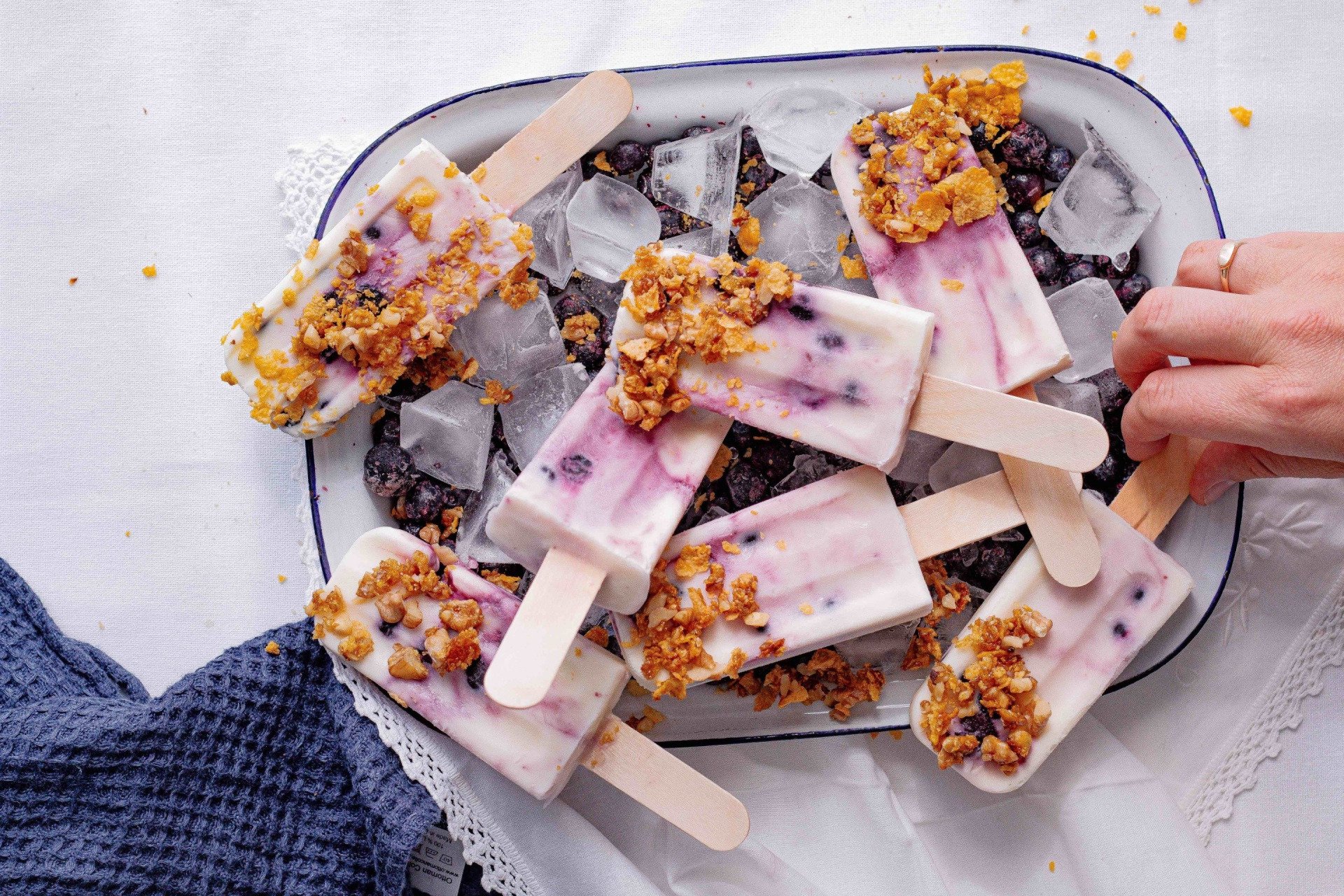Berry picking is one of my fondest childhood memories. I would spend it filling both my basket and tummy with copious amounts of the summer fruit and jumping into the car for the drive home with a pink schmeared grin that took days to wipe away.
Family-owned blueberry orchard Blueberry Haven in Timaru has allowed me to share this same joy with my little girl and get creative in the kitchen with the results – it doesn’t get much better than that.
Recipes, words, styling & images Samantha Parish
Baked Blueberry Cheesecake with Afghan Biscuit Crumb
Serves 8
Prep 20 mins
Cooking 1 hour plus cooling

300 g Afghan biscuits
50 g unsalted butter, melted
450 g cream cheese
250 g sour cream
1 cup (220 g) caster sugar
3 eggs
¼ cup (35 g) cornflour
1 tsp vanilla bean paste
finely grated zest of 1 lemon (use juice in syrup)
125 g fresh Blueberry Haven blueberries
Blueberry syrup
1 cup frozen or fresh Blueberry Haven blueberries
¼ cup maple syrup
juice of 1 lemon
1 tsp cornflour
Preheat oven to 180°C. Grease and line the base and sides of a 20 cm springform cake pan.
To make the base, place biscuits in a food processor and whiz until finely chopped. Add butter and whiz again until mixture starts to clump together. Press crumb mixture into base of pan. Chill for 10 minutes or until firm.
To make the filling, place cream cheese, sour cream and sugar in the bowl of a food processor and whiz until smooth. Add eggs one at a time, whizzing between additions. Then add cornflour, vanilla and zest and whiz to combine until smooth. Pour half the filling into prepared pan then scatter with half the blueberries. Add remaining mixture and scatter with remaining blueberries.
Reduce oven to 150°C and bake on a tray for 50–60 minutes or until filling is firm to the touch with a slight wobble in the centre. Turn oven off and leave for 2 hours to set. Transfer to the fridge to cool.
For the syrup place blueberries and maple syrup in a frypan over high heat and cook for 3 minutes or until bubbling. Combine lemon juice and cornflour and stir through hot blueberry mixture. Return to a simmer then remove from heat and stand to cool to room temperature.
Spoon over cheesecake to serve.
Blueberry Pops with Nut Crunch
Makes 8
Prep 20 mins plus freezing time
2 tbsp honey
1 cup fresh or frozen Blueberry Haven blueberries
1¾ cups (430 ml) natural Greek-style yoghurt
¼ cup (60 ml) pure cream
½ cup (110 g) caster sugar
Nut crunch
¼ cup (50 g) walnuts or any nut you prefer, roughly chopped
½ cup (80 g) cornflakes
1 tbsp honey
Place honey, blueberries and 1 tbsp water in a frypan over high heat, bring to a boil and cook for 1–2 minutes or until berries are softened slightly resembling a sauce. Remove from heat and set aside to cool slightly.
Combine yoghurt, cream and sugar.
Place 1 tsp blueberry mixture into each icy pole mould, then divide half the yoghurt mixture among moulds. Top with 1 tbsp blueberry mixture, then add remaining yoghurt mixture. Use a skewer to ripple then secure tops tightly with foil. Using a small, sharp knife, cut a small hole through centre of foil over each mould and insert a paddle-pop stick. Freeze overnight.
For the nut crunch, preheat oven to 180°C and grease and line a baking tray with baking paper. Add nuts, cornflakes and drizzle over honey. Bake for 5–10 minutes or until bubbling and golden. Stand to cool.
Remove icy poles from moulds and scatter with crumb to serve.
Recent stories



All Rights Reserved | CountryWide Media



